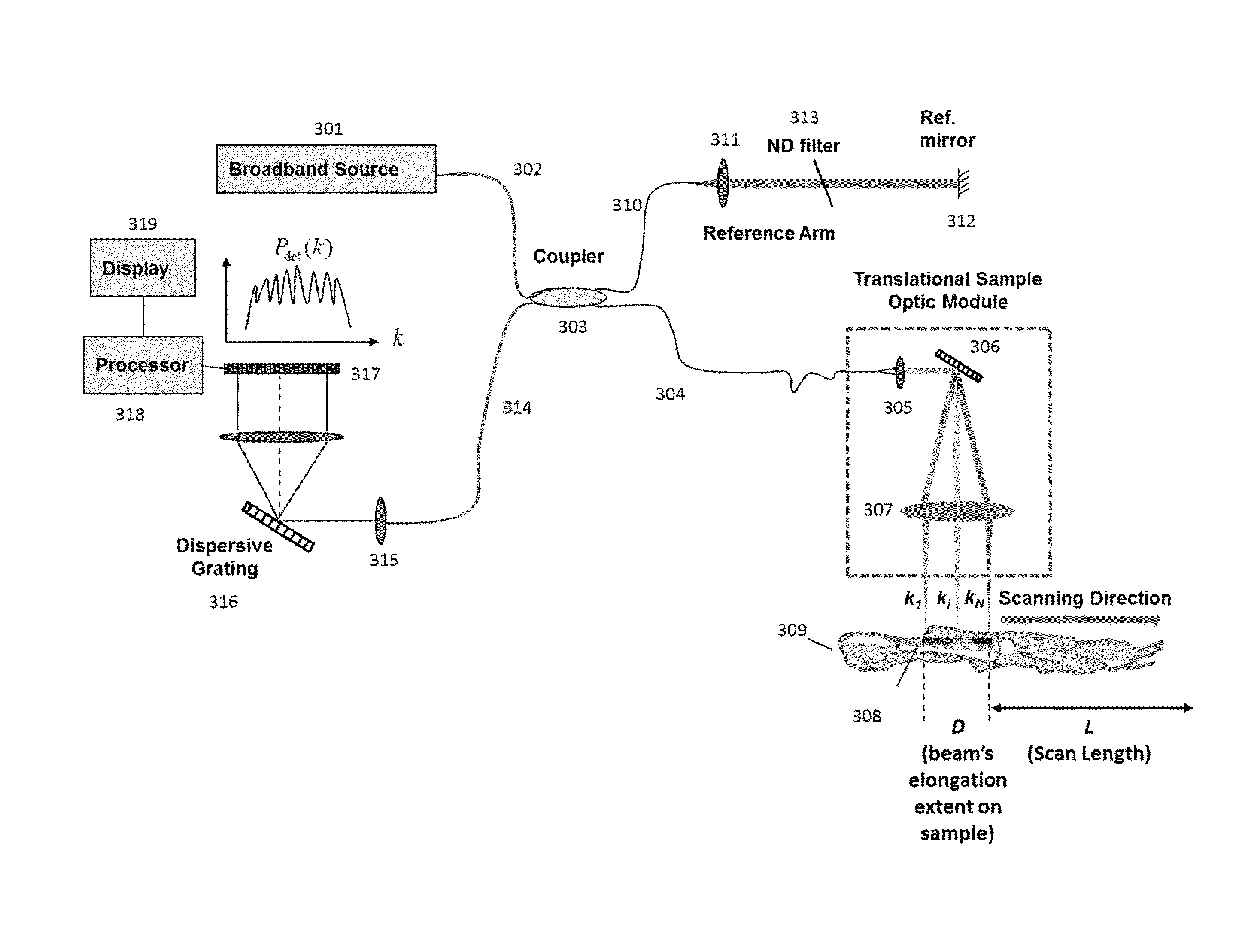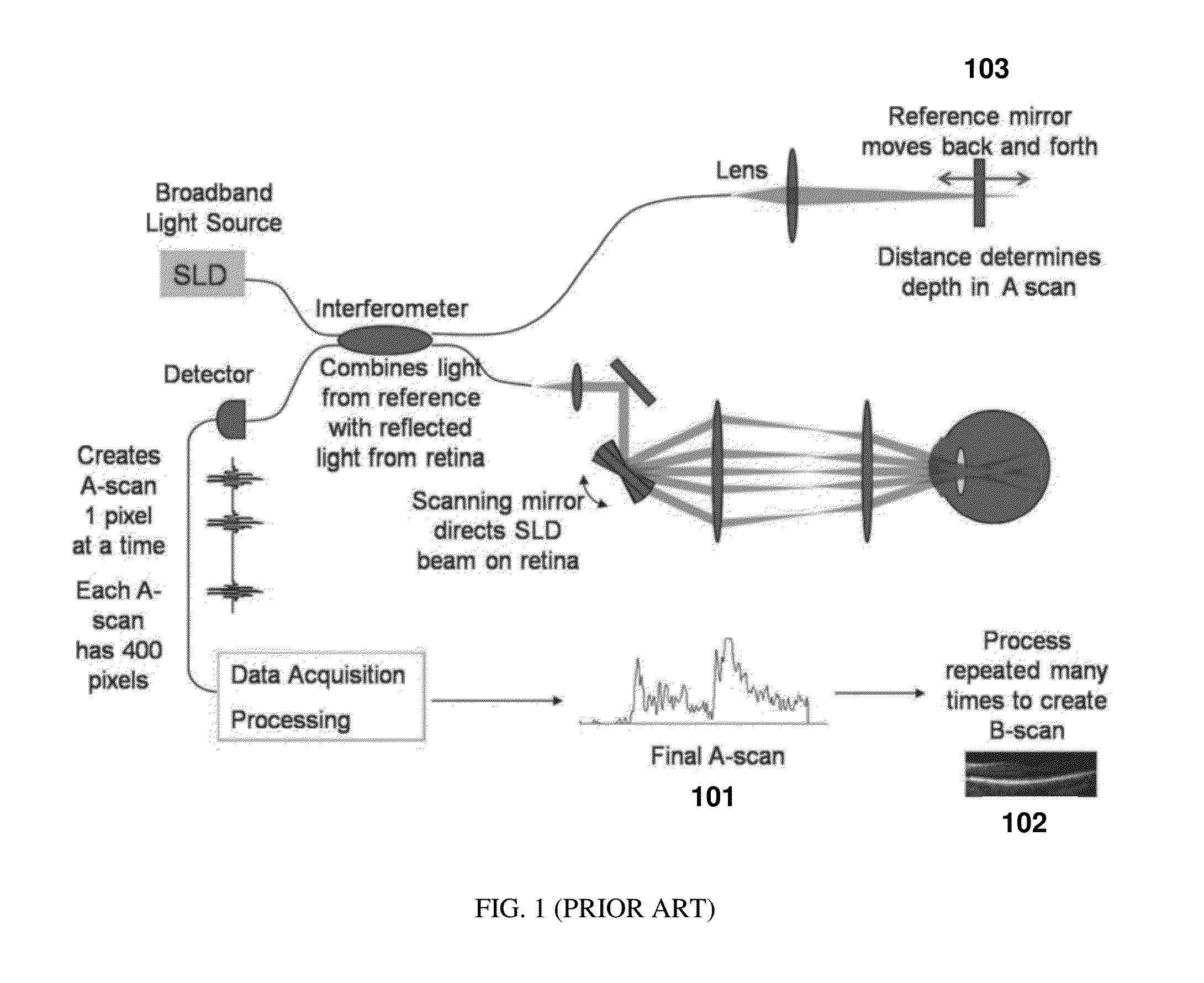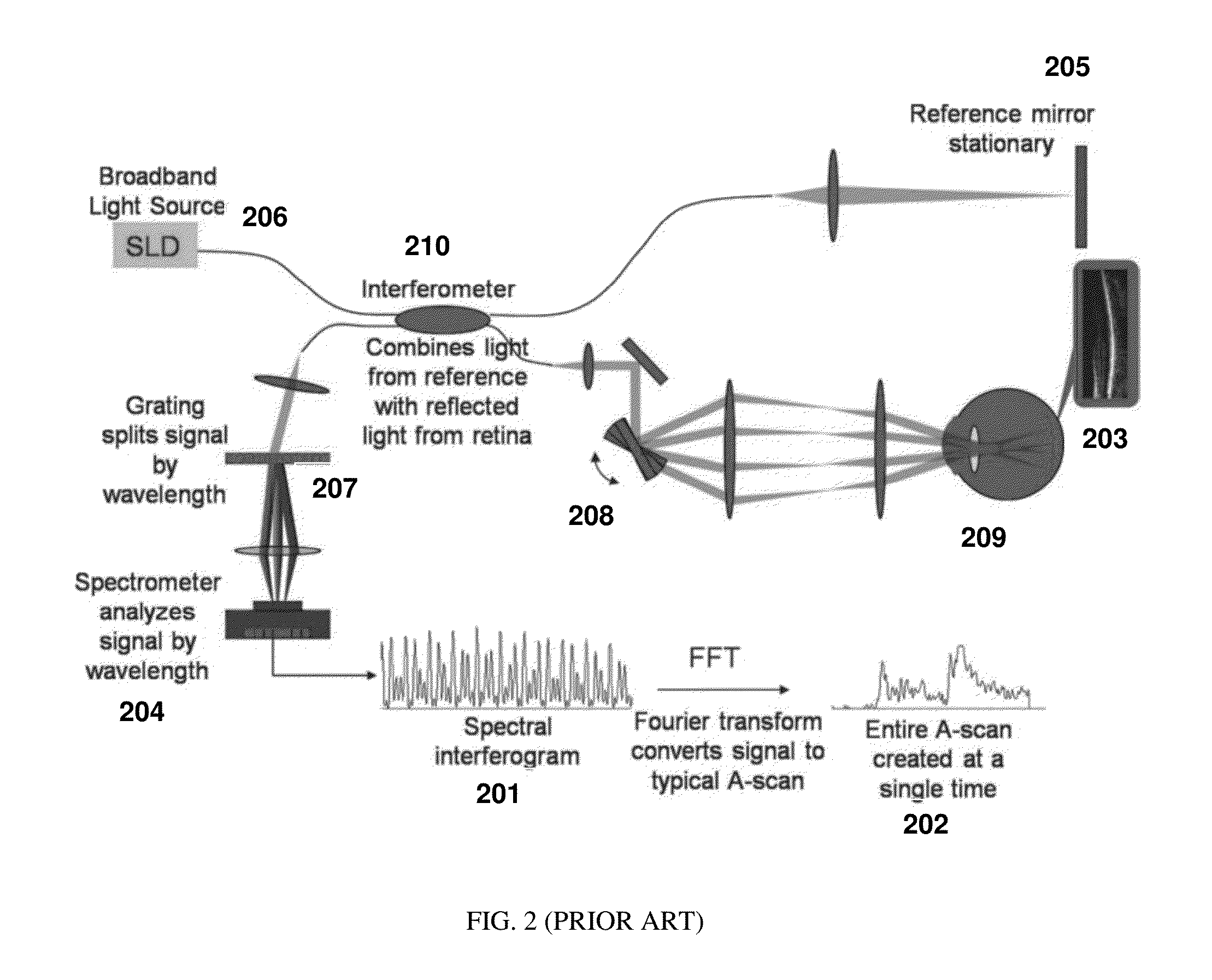Systems and methods for spectrally dispersed illumination optical coherence tomography
a technology spectrally dispersed illumination, applied in the field of optical coherence tomography, can solve the problems of general inability to use other non-confocal parallel techniques, and achieve the effects of sacrificing sensitivity, safe illumination of tissue, and more power
- Summary
- Abstract
- Description
- Claims
- Application Information
AI Technical Summary
Benefits of technology
Problems solved by technology
Method used
Image
Examples
Embodiment Construction
[0021]A basic concept of the present application is to spectrally disperse or de-multiplex illumination of the incident light at the sample, move the spectrally dispersed light along the spatial direction of dispersion and spectrally resolve the detection of the light interference. The broadband light from the source is distributed spectrally on the sample, and each acquisition simultaneously provides partial spectral interference information from multiple locations in the sample. Thus for a given spatial point, a single observation will be of a partial spectrum A-scan. When multiple partial spectrum A-scan observations are made at the same point by shifting the spectrum of light on to the tissue, the point will be illuminated by the entire broadband spectrum of the light source over time, thereby making it possible to construct a full axial resolution A-scan.
[0022]Spectral spreading of the incident beam on a sample makes it possible to increase incident power within safe limits. He...
PUM
 Login to View More
Login to View More Abstract
Description
Claims
Application Information
 Login to View More
Login to View More - R&D
- Intellectual Property
- Life Sciences
- Materials
- Tech Scout
- Unparalleled Data Quality
- Higher Quality Content
- 60% Fewer Hallucinations
Browse by: Latest US Patents, China's latest patents, Technical Efficacy Thesaurus, Application Domain, Technology Topic, Popular Technical Reports.
© 2025 PatSnap. All rights reserved.Legal|Privacy policy|Modern Slavery Act Transparency Statement|Sitemap|About US| Contact US: help@patsnap.com



